
Fundamentals
Within the expansive living library of Roothea, a cherished entry delineates the concept of Bantu Knots, a traditional hairstyle resonating with profound cultural and ancestral significance. This protective style, often known as Zulu Knots or Nubian Knots, involves sectioning hair into distinct portions, then coiling each section tightly upon itself to form small, compact spirals that rest close to the scalp. The aesthetic outcome presents a series of raised, sculptural coils across the head, which can vary in size and arrangement, reflecting individual creativity and community heritage.
The physical act of forming these knots serves a dual purpose ❉ it secures the hair, minimizing daily manipulation and exposure to environmental stressors, and simultaneously prepares the strands for a defined, lasting curl pattern once the knots are released. This foundational practice of coiling and protecting the hair has been a cornerstone of textured hair care for centuries, deeply embedded in the practices of African and diasporic communities.
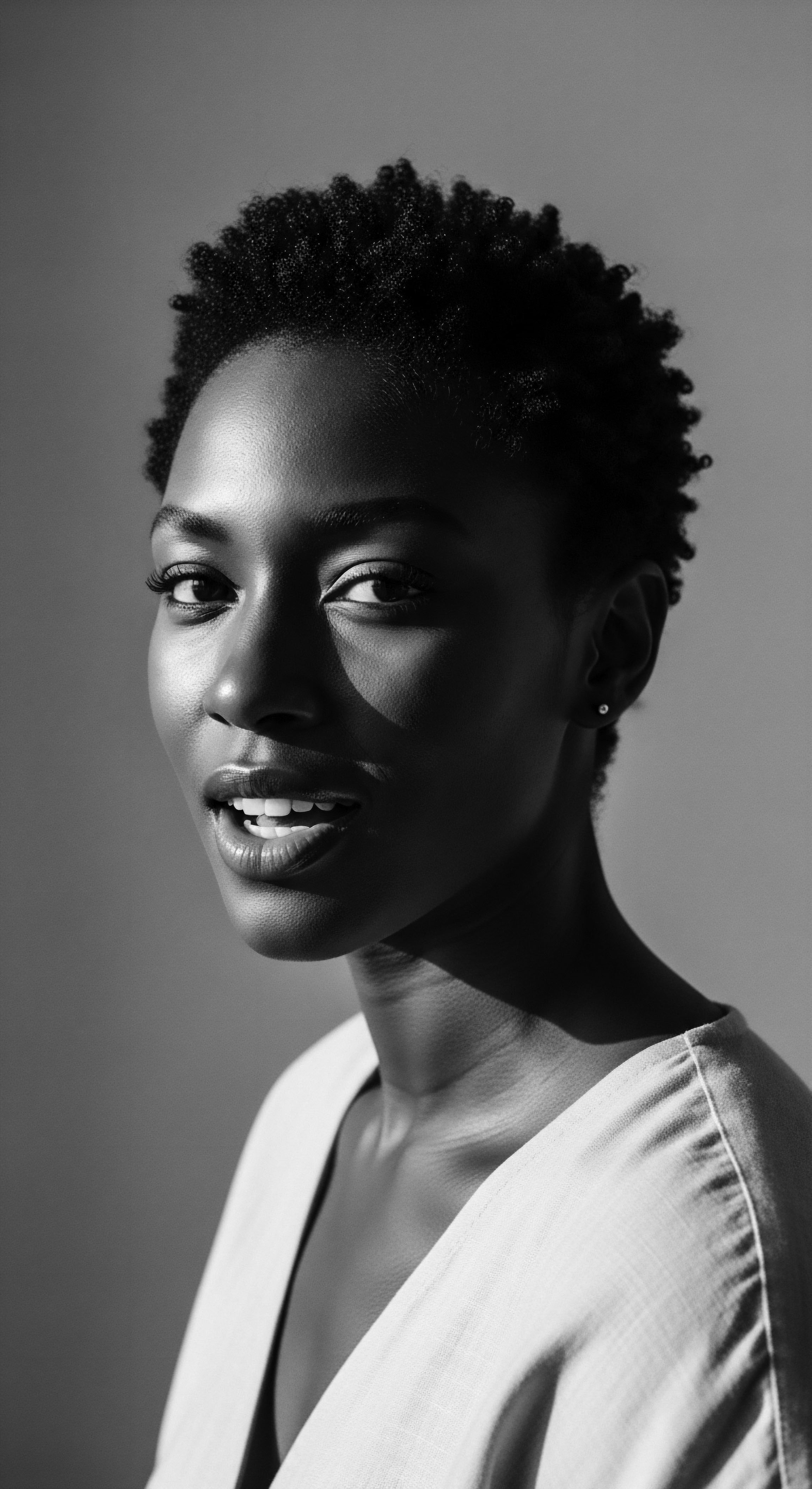
The Elemental Formation
The method of creating Bantu Knots begins with clean, moisturized hair, sectioned precisely to ensure uniform tension and distribution. Each segment is then twisted from its base, spiraling tightly until it forms a compact, self-contained coil. This coiled segment is then wrapped around itself, securing the knot close to the scalp without the need for external fasteners, though pins may be used for added stability.
The meticulous process of twisting and wrapping is not merely mechanical; it is a ritual of care, a gentle interaction with each strand, honoring its natural inclination to coil. This hands-on engagement with hair is a practice passed through generations, embodying a connection to ancestral methods of adornment and preservation.
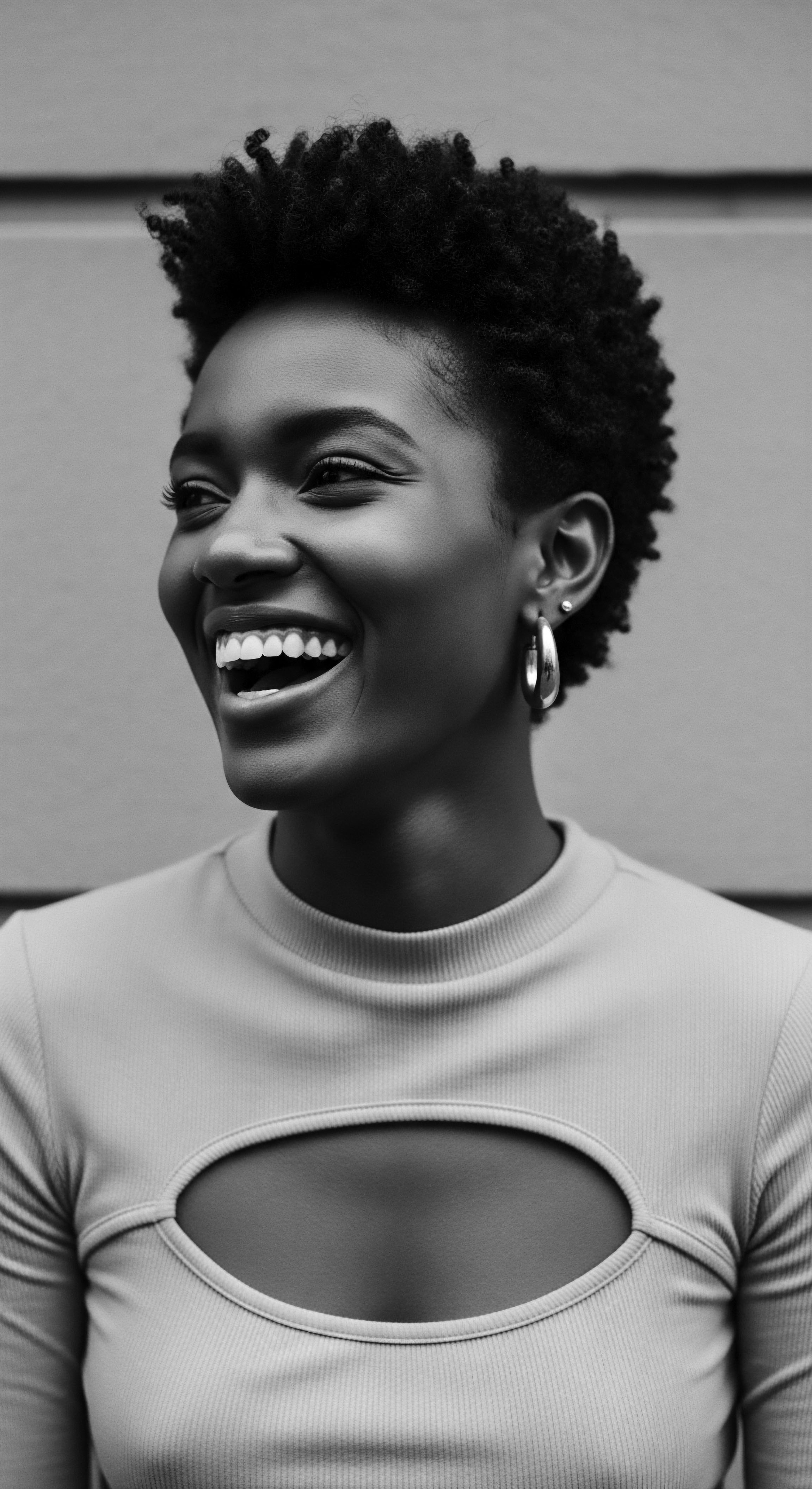
Initial Benefits for Textured Hair
The immediate advantages of Bantu Knots for textured hair are evident in their protective capacity. Afro-textured hair, with its unique tightly coiled structure, can be prone to dryness and breakage if not adequately cared for. Bantu Knots provide a shield against the elements, reducing friction, tangling, and the mechanical stress that can lead to damage. They effectively lock in moisture and applied products, allowing emollients and hydrators to penetrate deeply into the hair shaft.
This method fosters a healthy environment for hair growth and retention, making it a foundational practice for those seeking to nurture their natural hair and maintain its vitality. The style also serves as an excellent heat-free method for creating defined curls or waves, a testament to its versatility and enduring utility.
Bantu Knots represent a foundational practice in textured hair care, embodying both protective utility and a deep connection to ancestral styling methods.
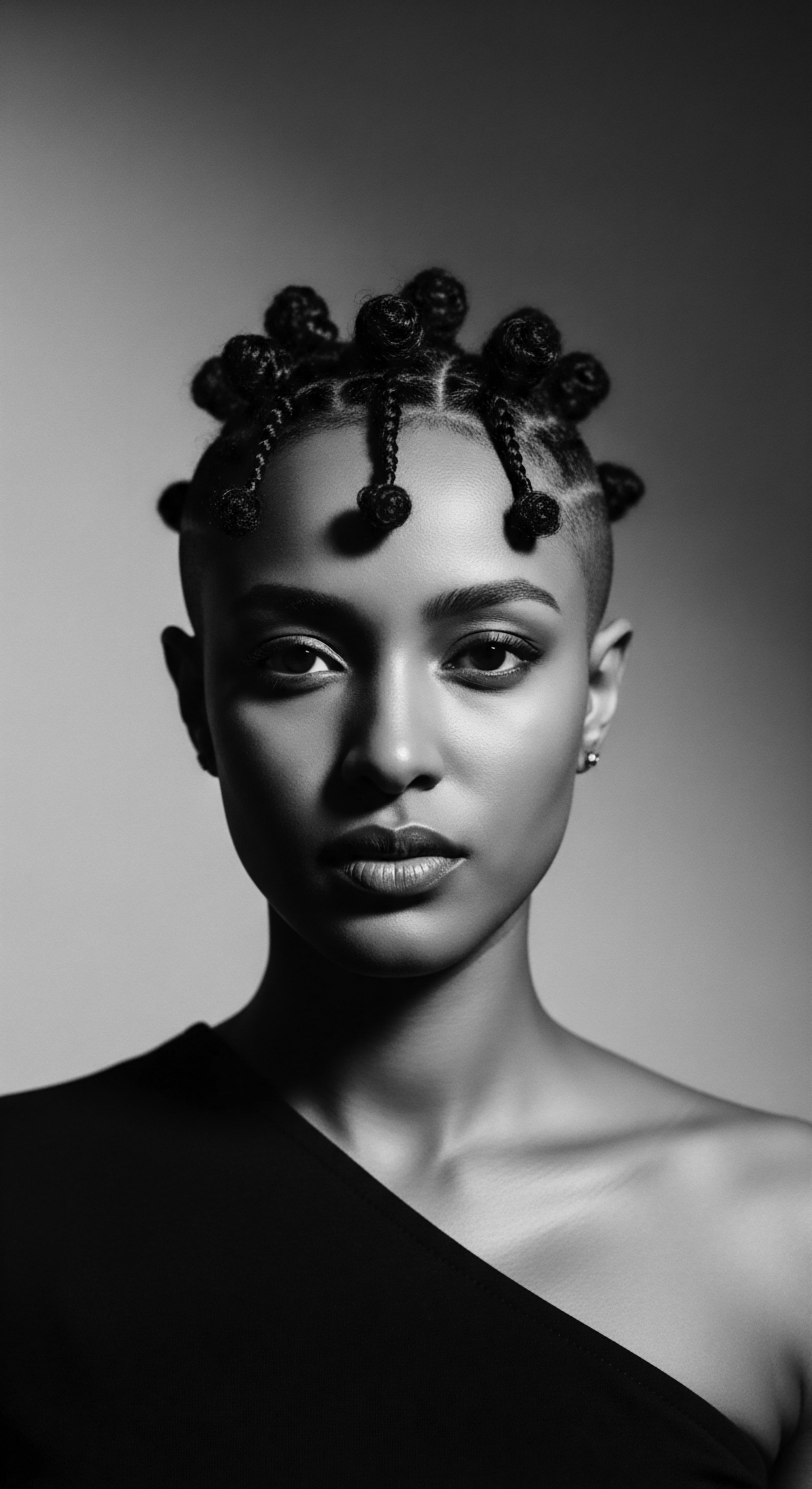
An Overview of Early Meanings
Even in their simplest application, Bantu Knots carry an unspoken significance. They are a visible declaration of respect for one’s natural hair, a conscious choice to work with its inherent structure rather than against it. This choice resonates with the heritage of Black and mixed-race individuals, where hair has long been a canvas for identity, a symbol of resilience, and a connection to cultural roots. The meaning of Bantu Knots, even at this introductory level, extends beyond mere aesthetics; it speaks to a legacy of self-care and cultural affirmation that has persisted through time.
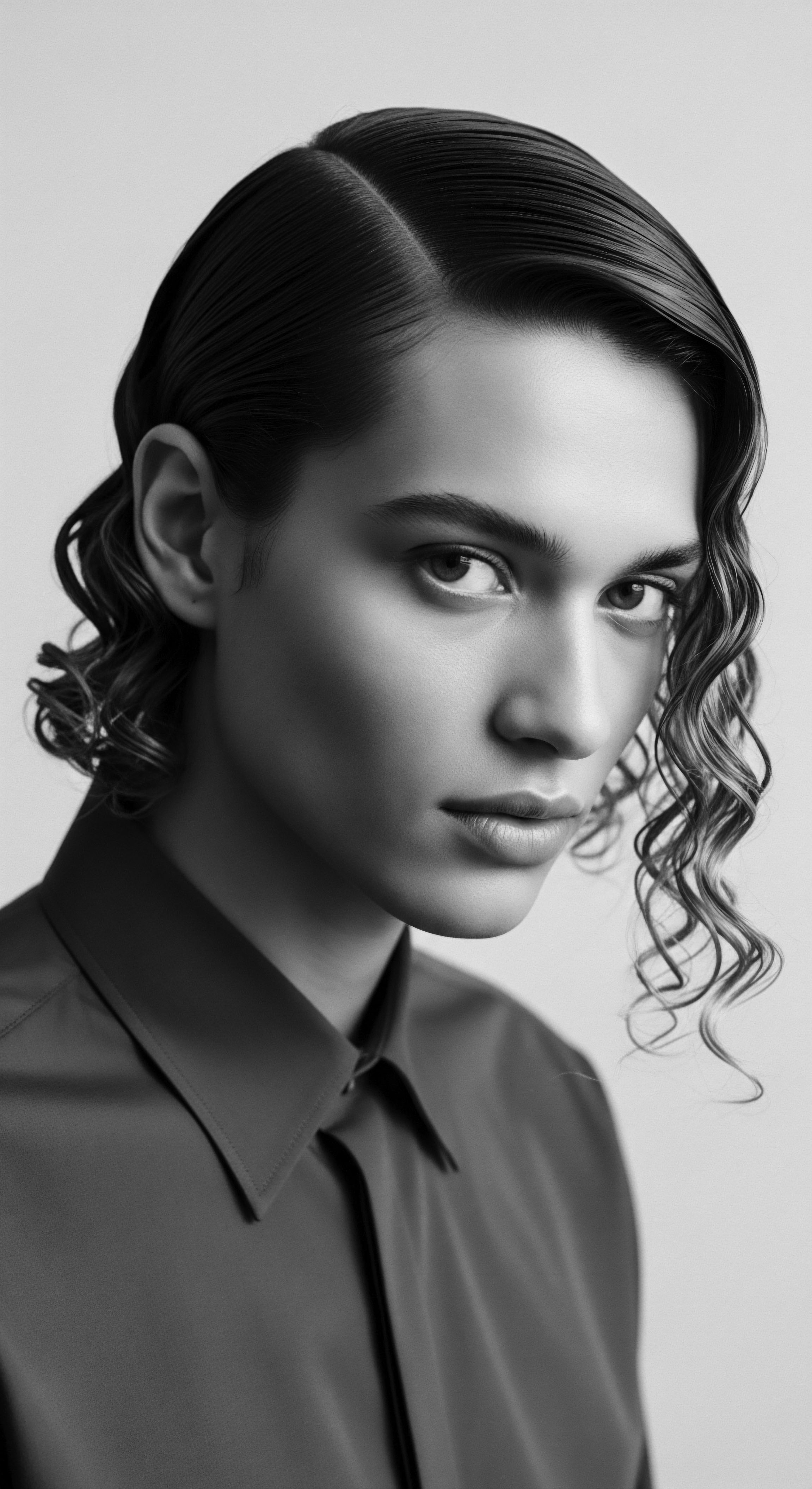
Intermediate
Delving further into the layered meaning of Bantu Knots reveals their profound cultural resonance and their strategic utility in the continuum of textured hair heritage. This style is far more than a simple twist; it embodies centuries of accumulated wisdom regarding the care and adornment of hair that defies conventional Eurocentric norms. Understanding Bantu Knots at an intermediate level involves appreciating their historical depth, their function as a medium of communication, and their role in preserving the intrinsic qualities of coiled strands. They stand as a testament to ingenuity, adaptability, and the enduring spirit of communities that have consistently honored their hair as a vital aspect of self.
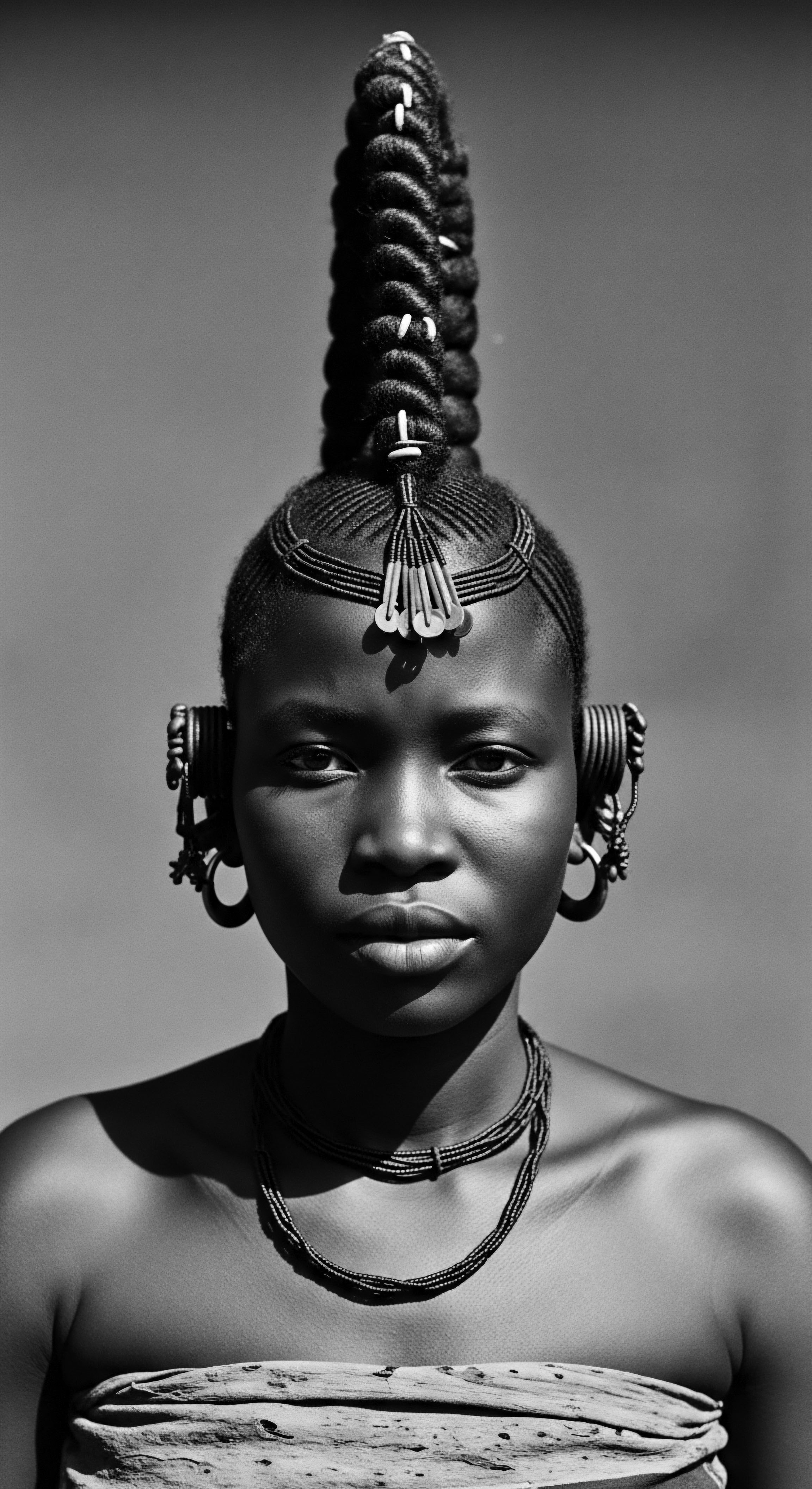
Historical Footprints of Coiled Adornment
The lineage of Bantu Knots stretches back across millennia, finding its origins in the diverse communities of Africa. The term “Bantu” itself refers to a vast ethnolinguistic group spanning Southern, Central, and Eastern Africa, underscoring the widespread presence of these coiled styles. In ancient African societies, hairstyles were never simply a matter of personal preference; they served as a complex visual language, conveying information about an individual’s social status, age, marital standing, tribal affiliation, and even spiritual beliefs. The practice of creating intricate coiled and knotted styles, similar to what we now term Bantu Knots, was integral to rites of passage, ceremonies, and daily life.
For instance, the Zulu people of Southern Africa, from whom the alternative name “Zulu Knots” derives, traditionally wore these styles as symbols of pride and beauty. This rich historical backdrop illustrates that the physical form of the knot was inseparable from its societal and spiritual context, serving as a living archive of communal values.
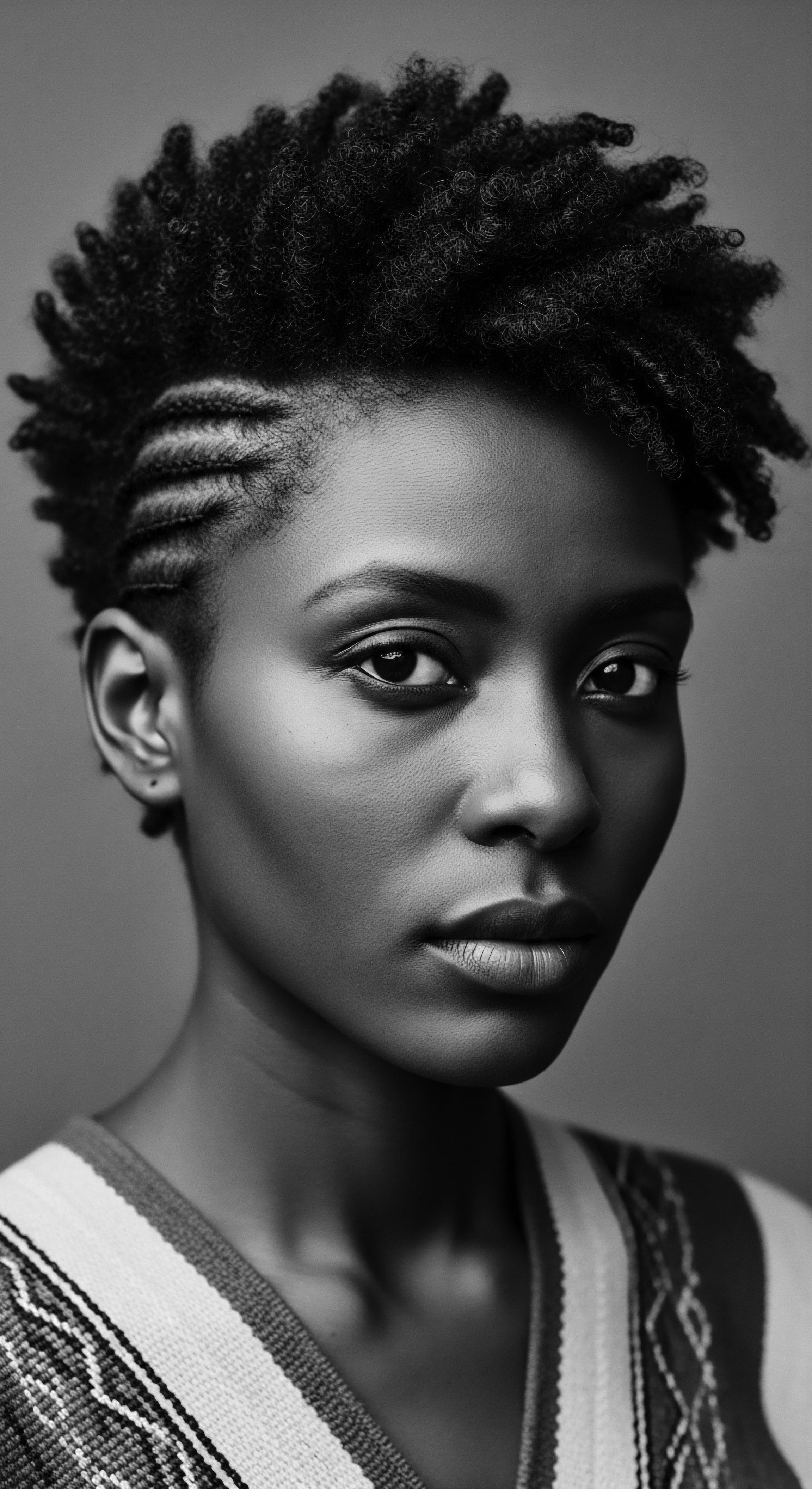
Hair as a Chronicle of Life
- Social Status ❉ The intricacy, size, and placement of knots often indicated a person’s standing within their community, signifying royalty, leadership, or esteemed roles.
- Age and Maturity ❉ Specific coiled styles marked transitions from childhood to adolescence, or from maidenhood to marriage and motherhood, serving as visual markers of life’s significant chapters.
- Spiritual Connection ❉ In many African cosmologies, hair, being the highest point of the body, was considered a conduit for spiritual energy and a direct link to the divine and ancestors. Styles like knotted coils were thought to protect this vital connection.

The Tender Thread of Care and Protection
Beyond their symbolic value, Bantu Knots were, and remain, a highly effective protective style. Afro-textured hair, characterized by its unique elliptical cross-section and numerous bends along the shaft, is inherently more vulnerable to mechanical stress and moisture loss compared to straighter hair types. The coiling mechanism of Bantu Knots minimizes exposure to external elements like sun, wind, and pollution, which can strip away natural oils and lead to dryness.
By tucking away the delicate ends of the hair, the style drastically reduces tangling and breakage, preserving hair length and promoting overall hair health. This deliberate act of enclosure creates a micro-environment that encourages the retention of moisture and emollients, which is crucial for the vitality of tightly coiled hair.
| Aspect of Protection Moisture Retention |
| Ancestral Wisdom Application of natural oils (e.g. shea butter, palm oil) and plant extracts to nourish hair before coiling. |
| Modern Understanding Scientific validation of occlusive agents and humectants that prevent transepidermal water loss from the hair shaft. |
| Aspect of Protection Mechanical Stress Reduction |
| Ancestral Wisdom Careful handling during styling, often communal, reducing individual strain on hair strands. |
| Modern Understanding Minimizing manipulation, reducing friction from clothing and bedding, and avoiding heat styling. |
| Aspect of Protection Environmental Shielding |
| Ancestral Wisdom Hair often covered with wraps or adornments to protect from sun and dust. |
| Modern Understanding Awareness of UV damage, pollution, and humidity control for hair integrity. |
| Aspect of Protection The enduring wisdom of ancestral practices aligns with contemporary scientific understanding, emphasizing holistic care for textured hair. |
The practice of preparing hair for Bantu Knots often involved the use of natural ingredients sourced from the earth, reflecting an intimate knowledge of ethnobotany. Traditional African communities utilized botanical extracts and oils, such as shea butter, palm oil, and various plant-based emollients, to lubricate and seal the hair before coiling. These practices were not merely cosmetic; they were deeply rooted in a holistic approach to well-being, recognizing hair as an integral part of the body’s ecosystem. The wisdom passed down through generations ensured that hair was not only styled but also deeply nourished, a testament to the comprehensive care embedded in these ancestral traditions.
The historical significance of Bantu Knots extends beyond mere aesthetics, serving as a complex language of identity, status, and spiritual connection across African communities.

A Symbol of Resilience and Identity
In the face of profound historical challenges, particularly during the transatlantic slave trade and subsequent periods of oppression, Bantu Knots, and similar coiled styles, transformed into potent symbols of resistance and cultural continuity. Stripped of their languages, names, and lands, enslaved Africans ingeniously preserved aspects of their heritage through hair practices. Ayana Byrd and Lori Tharps, in their significant work, Hair Story ❉ Untangling the Roots of Black Hair in America (2001), document how enslaved Africans maintained traditional styling techniques, including coiling and knotting, despite brutal conditions.
This act of preserving traditional hair practices became a silent yet powerful assertion of identity and cultural defiance, a refusal to be entirely erased. The very act of caring for one’s hair, in styles that echoed distant homelands, became a profound statement of selfhood and a link to an unbroken ancestral lineage.
Even today, for Black and mixed-race individuals globally, wearing Bantu Knots can be a deliberate choice to connect with this rich history. It is a way of honoring ancestors, celebrating the unique beauty of textured hair, and reclaiming narratives that were once suppressed. The style’s contemporary popularity reflects a resurgence of pride in Afrocentric aesthetics and a broader movement towards natural hair acceptance, recognizing the beauty and strength inherent in coiled textures.
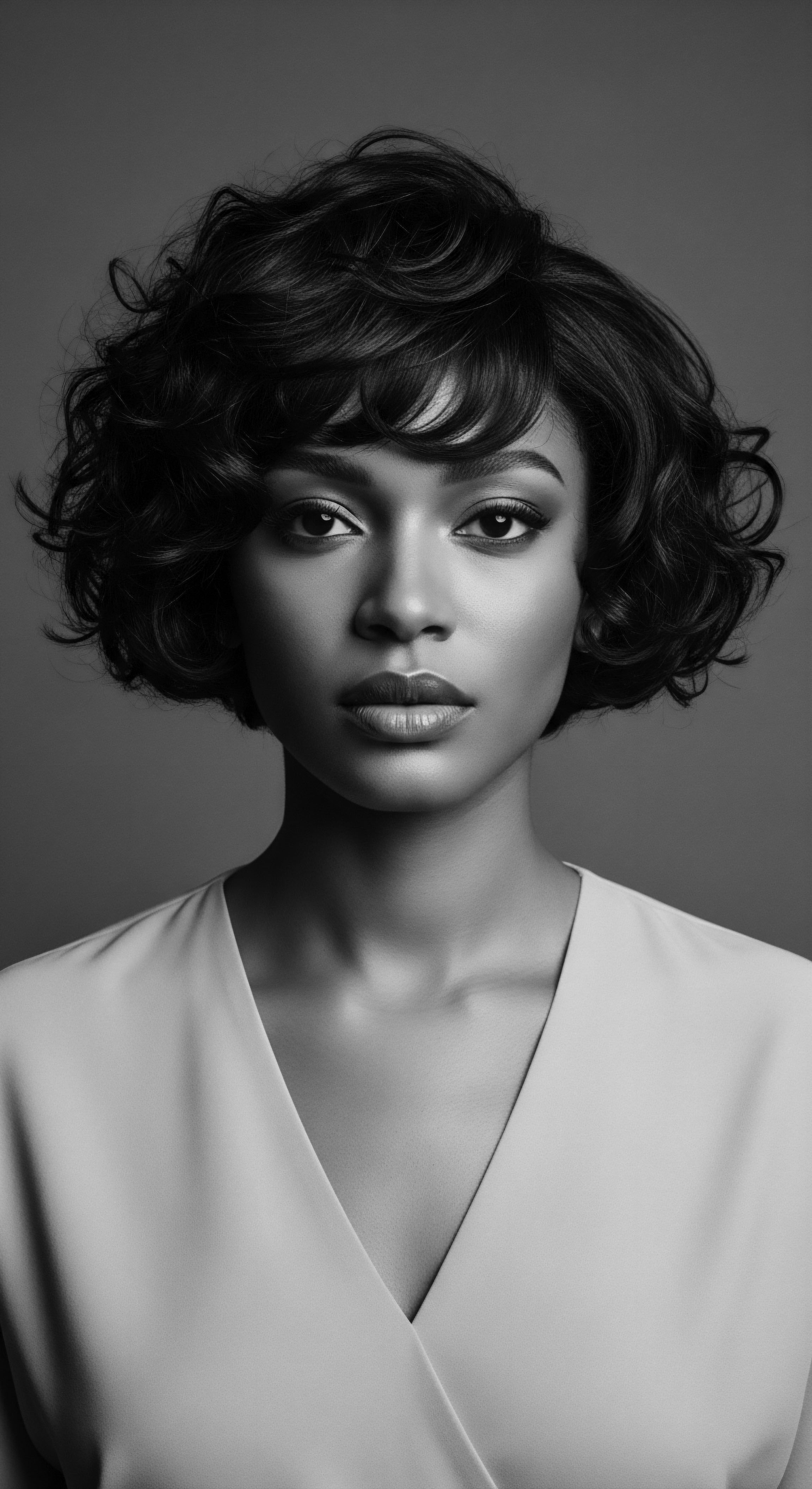
Academic
The academic examination of Bantu Knots transcends simple description, positioning this hairstyle as a multifaceted phenomenon that bridges biological anthropology, cultural ethnography, and the enduring human experience of identity. Its meaning, at this advanced level, is an intricate interplay of genetic predispositions, ancient practices, and the socio-political landscapes that have shaped the textured hair journey. A comprehensive understanding requires a critical lens, dissecting the precise mechanisms of its formation, its deep roots in African civilizations, and its continuous evolution as a symbol of resilience and cultural affirmation within the global Black and mixed-race diaspora.
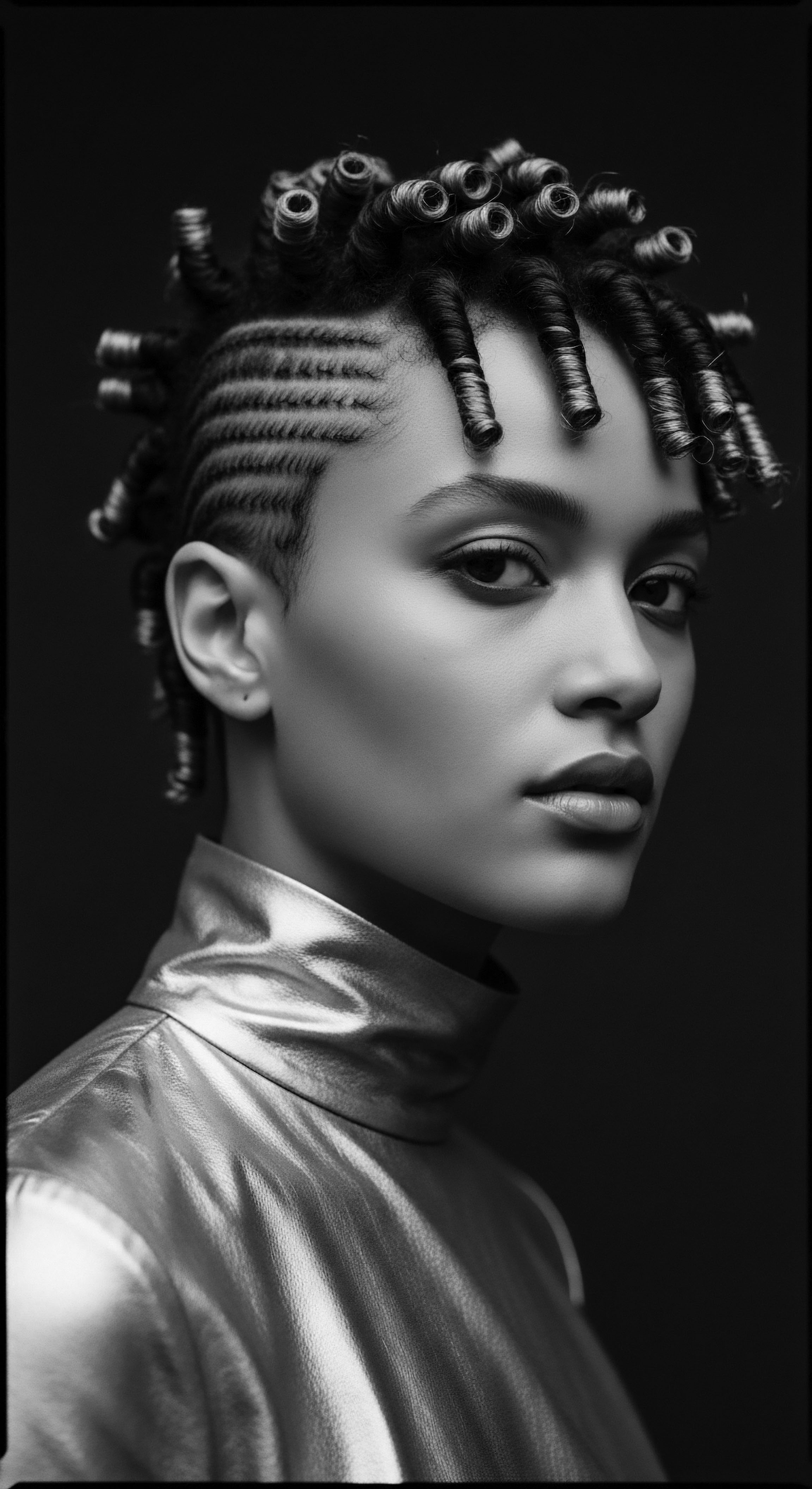
The Biophysical Delineation of Coiled Hair
The inherent suitability of Afro-textured hair for styles like Bantu Knots lies in its unique biophysical characteristics. Unlike straight or wavy hair, Afro-textured hair possesses an elliptical cross-section and grows in a tightly coiled, helical pattern from the scalp. This distinct morphology results from an asymmetrical distribution of keratinocytes within the hair follicle, causing the hair shaft to bend and twist as it emerges. The numerous twists and turns along the hair shaft create natural points of fragility, making Afro-textured hair more susceptible to breakage if not handled with care.
Furthermore, the coiled structure impedes the efficient distribution of natural sebum from the scalp down the hair shaft, contributing to inherent dryness. Bantu Knots, from a scientific perspective, represent an ingenious ancestral solution to these challenges. By coiling sections of hair tightly, they minimize exposure to external stressors, reduce mechanical friction between individual strands, and create a sealed environment that helps to retain moisture and applied emollients. This intentional coiling acts as a protective barrier, reducing the frequency of manipulation and thus mitigating potential damage, promoting hair health and length retention.
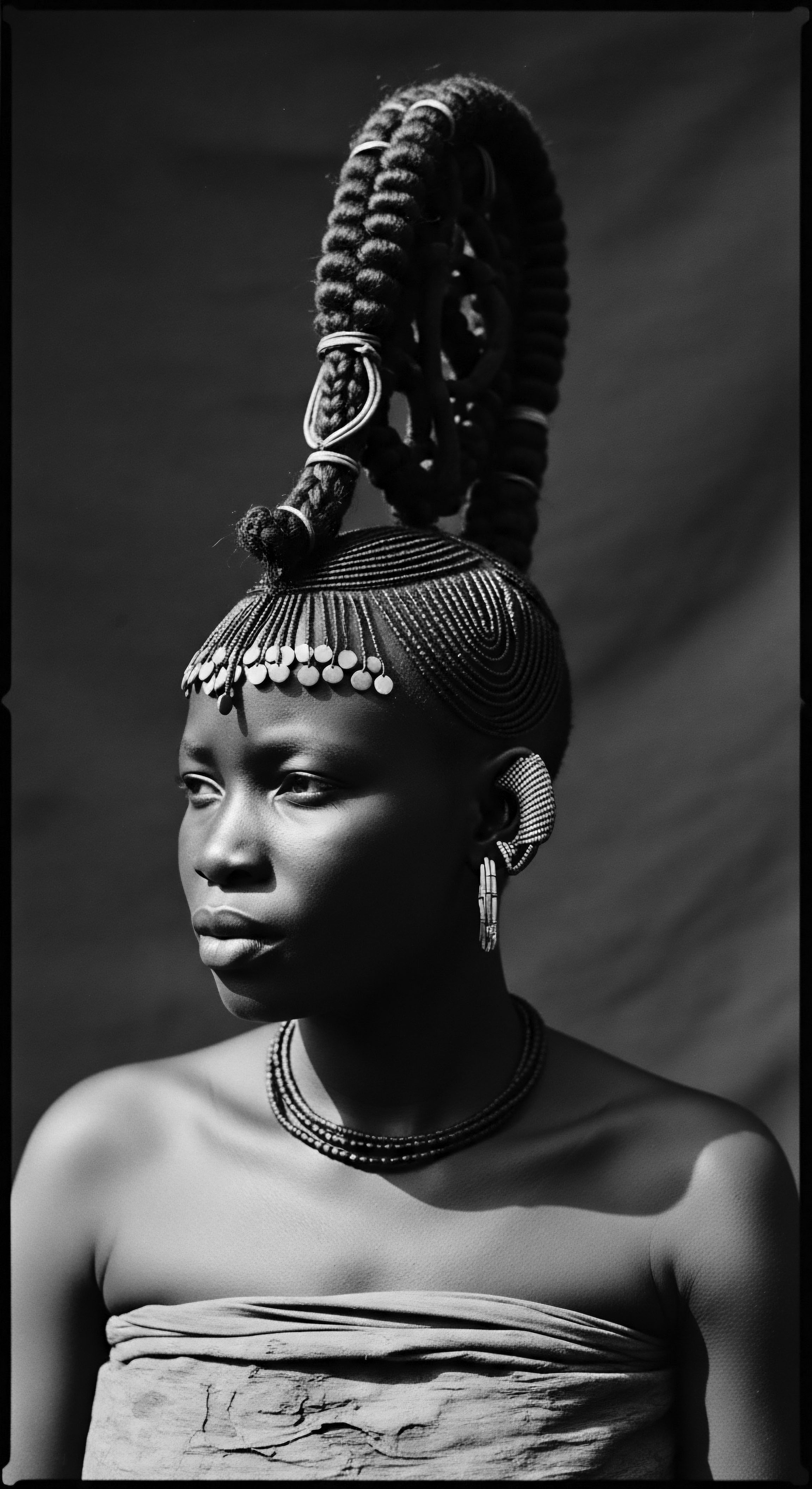
Micro-Mechanics of Knot Formation
- Torsional Stress Distribution ❉ The twisting of each hair section into a knot distributes the natural torsional stress inherent in coiled hair, preventing excessive strain on any single point along the strand.
- Cuticle Compression ❉ The tight wrapping of the knot gently compresses the outer cuticle layers, creating a smoother, more uniform surface that reduces moisture evaporation and protects the inner cortex.
- Thermal Insulation ❉ The compact, multi-layered structure of the knot creates pockets of air, providing a degree of thermal insulation that can protect the scalp and hair from extreme temperatures, both hot and cold.
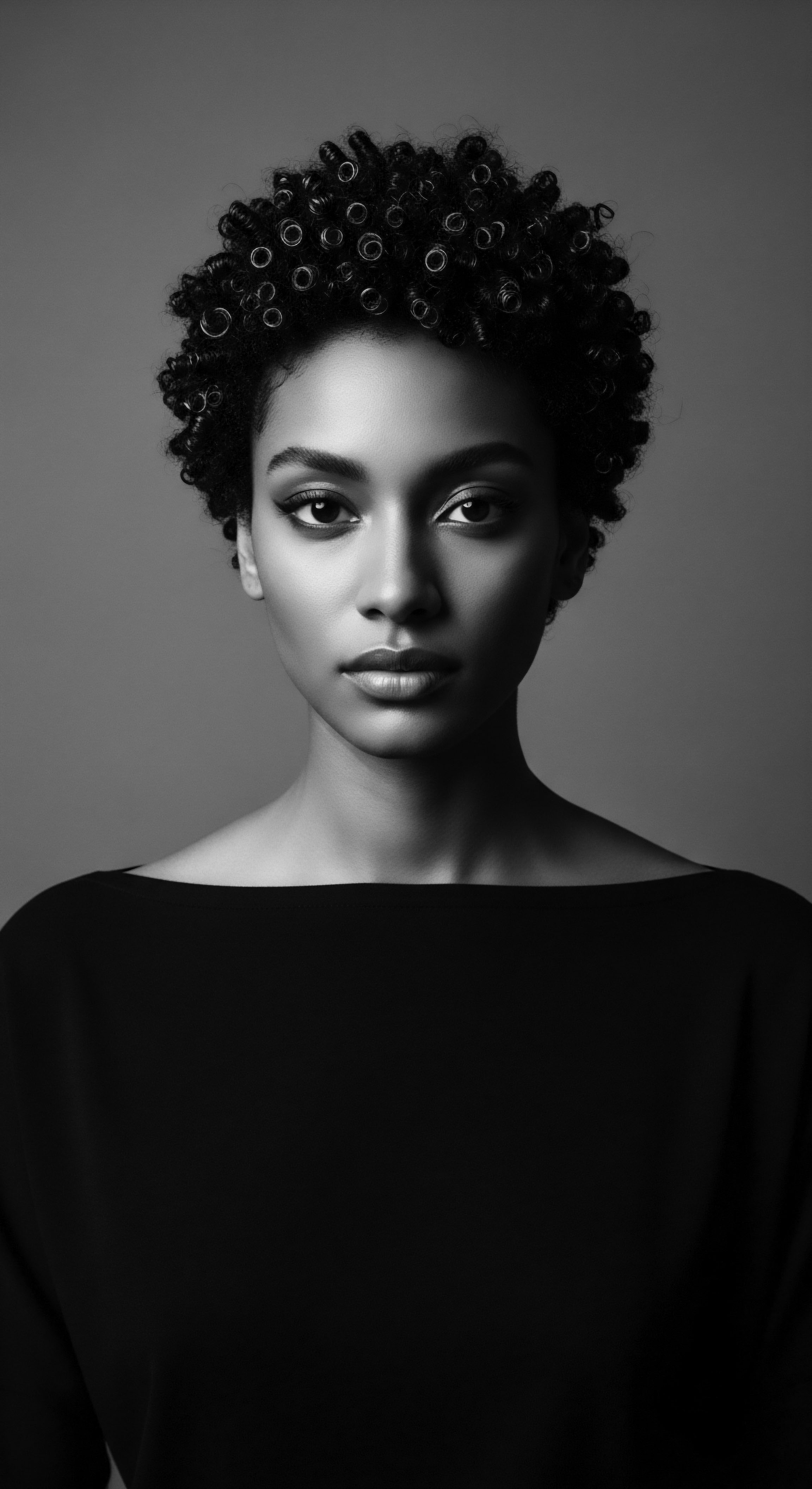
Echoes from the Source ❉ Ancestral Practices and Cultural Significance
The historical roots of Bantu Knots are deeply embedded in the rich cultural tapestry of various African ethnic groups, long before the term “Bantu” became a Westernized descriptor. These coiled styles were not merely ornamental; they were integral to social, spiritual, and communal life. Hair, often considered a sacred part of the body and a conduit for spiritual energy, was meticulously cared for and styled to convey complex messages.
For instance, among the Yoruba people of Nigeria, intricate hairstyles, including variations of coiled and threaded styles, signified community roles, marital status, and even spiritual affiliations. The act of hair styling itself was a communal ritual, often performed by elders, serving as a powerful mechanism for intergenerational knowledge transfer and social bonding.
The designation of specific styles for rites of passage underscores their profound societal import. In many African cultures, a change in hairstyle, such as the adoption of coiled knots, marked significant life transitions—from childhood to adulthood, or during periods of mourning or celebration. This practice transformed hair into a living chronicle, visually narrating an individual’s journey and their place within the collective. The traditional use of natural ingredients, such as plant-based oils and butters like shea butter and palm oil, alongside the styling process, further highlights an ancient, holistic understanding of hair wellness rooted in ethnobotanical knowledge.
Bantu Knots are a testament to the profound intersection of biological adaptation and cultural ingenuity, offering a protective solution tailored to the unique characteristics of Afro-textured hair.
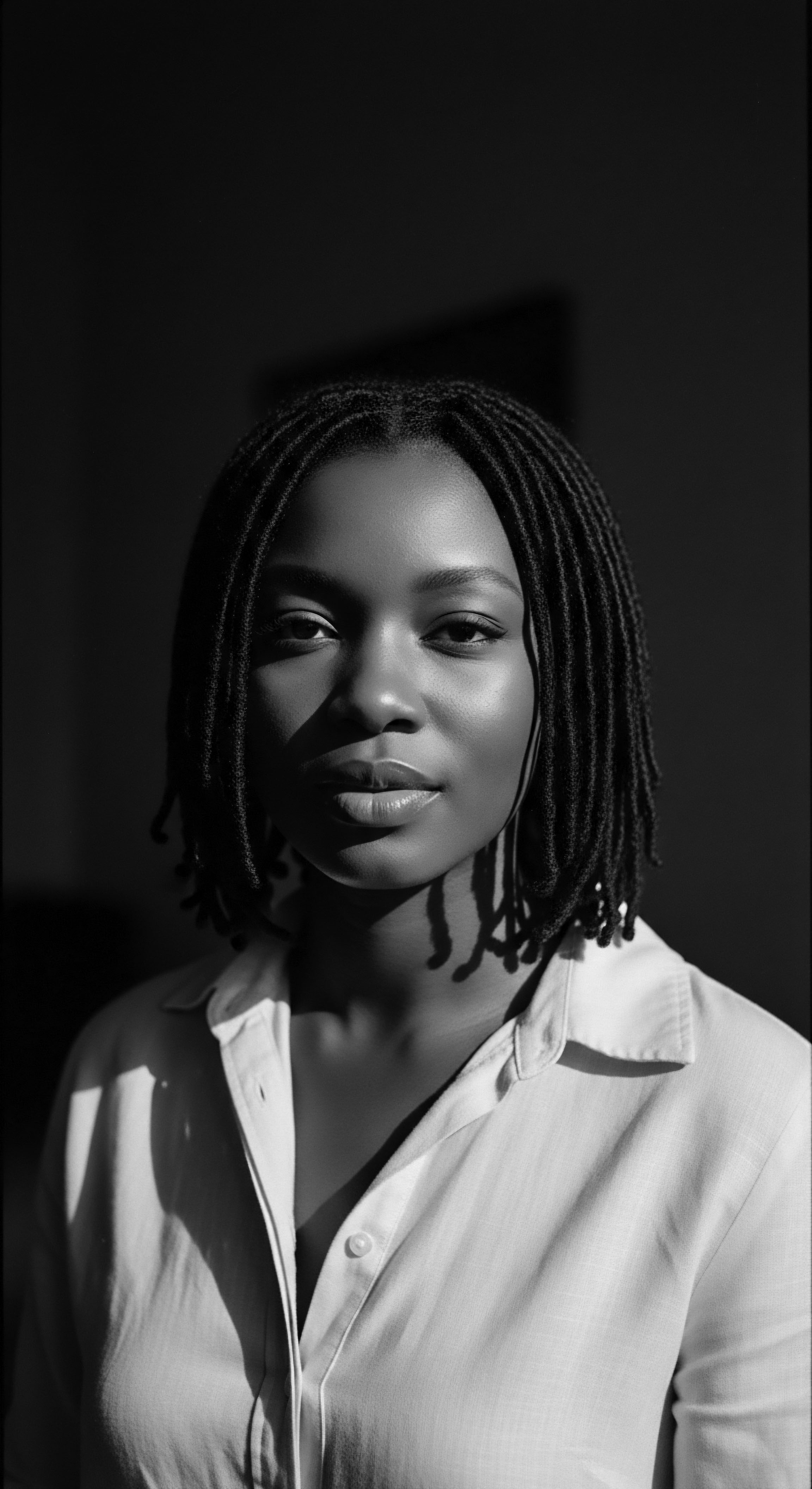
The Unbound Helix ❉ Resistance, Reclamation, and Identity
The trajectory of Bantu Knots and similar coiled styles in the diaspora is inextricably linked to narratives of resistance and identity reclamation. During the transatlantic slave trade, enslaved Africans were systematically stripped of their cultural markers, including their traditional hairstyles. The forced shaving of heads upon arrival in the Americas was a deliberate act of dehumanization, aimed at severing ties to their heritage.
Yet, despite these brutal attempts at erasure, the ingenuity and resilience of African peoples persisted. As Ayana Byrd and Lori Tharps articulate in Hair Story ❉ Untangling the Roots of Black Hair in America (2001), enslaved individuals often found ingenious ways to preserve aspects of their hair culture, including the techniques of coiling and knotting, often using them as discreet acts of defiance and cultural continuity.
This historical persistence speaks to the profound psychological and sociological significance of hair within Black and mixed-race communities. Hair became a repository of memory, a visible link to ancestry, and a silent language of identity. In the face of oppressive Eurocentric beauty standards that devalued textured hair, maintaining traditional styles like Bantu Knots was an act of profound self-affirmation.
The historical context reveals that the very texture of Afro-hair was politicized, with straighter textures often favored and associated with higher status, while coiled textures were stigmatized. The conscious choice to wear and care for hair in its natural, coiled state, therefore, became a powerful statement against systemic racism and a celebration of inherent beauty.
Dr. Willie Morrow, a pioneering figure in Black hair care, notably emphasized the deep cultural significance of Black hair. He understood that hair was a powerful carrier of community identity and beauty.
Morrow’s work, including the invention of the Afro Pick, directly addressed the need for tools and products that respected and celebrated Afro-textured hair, pushing back against a beauty industry that largely ignored or denigrated it. His efforts, alongside countless community members, contributed to a re-evaluation of Black hair aesthetics, affirming that styles like Bantu Knots are not just trends, but deeply rooted expressions of heritage and self-worth.
The contemporary resurgence of Bantu Knots within the natural hair movement is a continuation of this historical narrative. It represents a conscious decision to embrace and celebrate the diverse manifestations of Afro-textured hair, honoring its ancestral legacy while shaping its future. This movement is not merely about aesthetics; it is a powerful socio-cultural phenomenon that redefines beauty standards, promotes self-acceptance, and strengthens communal bonds through shared practices and heritage. The enduring appeal of Bantu Knots underscores their timeless meaning ❉ a symbol of protection, pride, and the unbreakable connection to a rich, vibrant lineage.
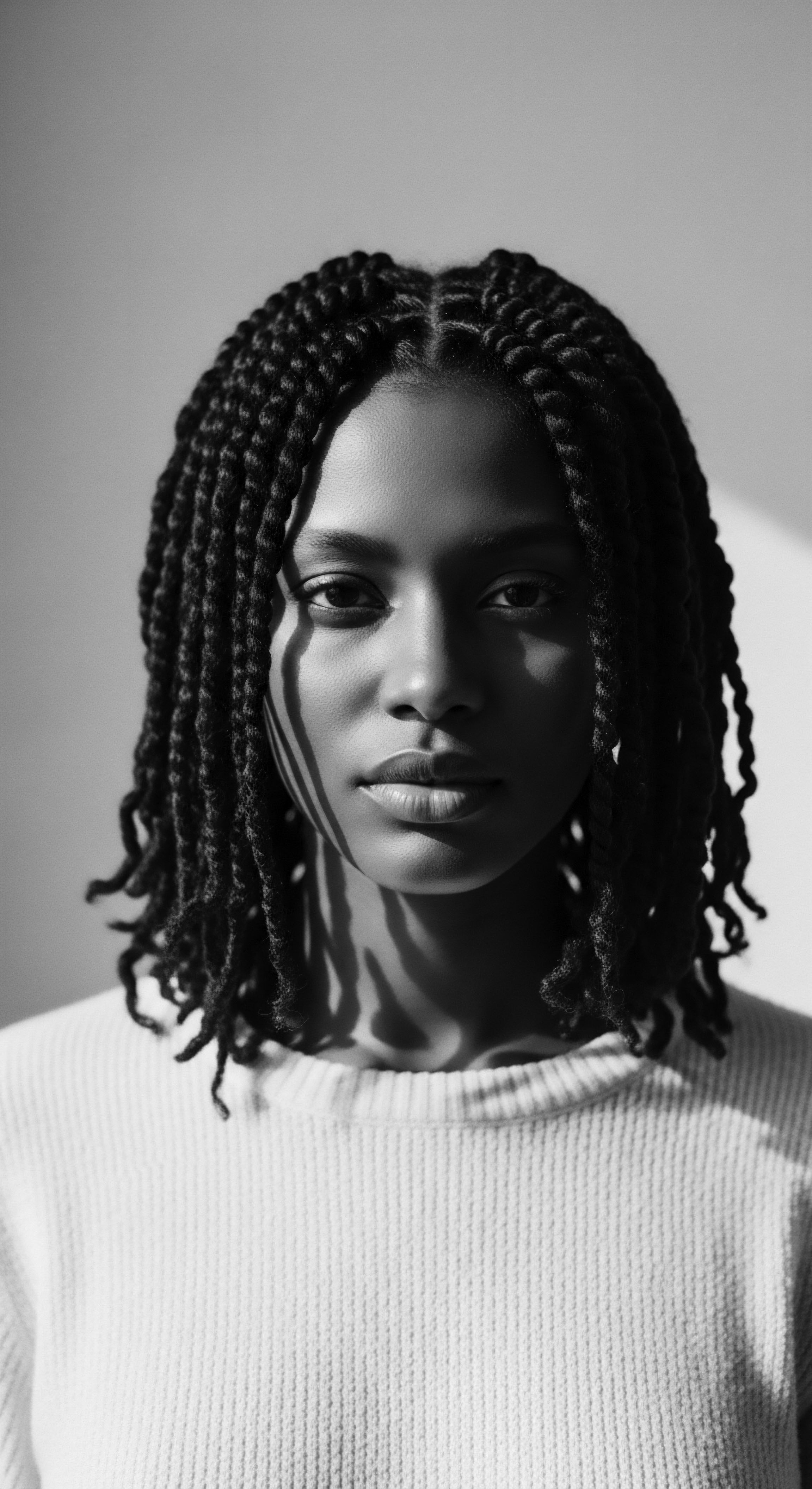
Reflection on the Heritage of Bantu Knots
As we conclude this exploration of Bantu Knots, we are reminded that hair, particularly textured hair, is far more than mere strands; it is a living, breathing archive, a testament to enduring heritage. The journey of Bantu Knots, from elemental biology and ancient practices to its contemporary role in voicing identity, paints a vivid portrait of resilience. Each coil, each deliberate twist, carries the echoes of ancestral hands, whispering stories of communal care, silent defiance, and profound self-expression. The ‘Soul of a Strand’ ethos finds its truest manifestation in styles like these, where the physical act of styling becomes a spiritual connection to generations past.
It is a harmonious blend of practical preservation and sacred tradition, demonstrating how wisdom gleaned from the earth and passed through familial lines continues to nourish and protect. The continuity of Bantu Knots reminds us that heritage is not a static relic; it is a dynamic, adaptive force, continuously shaping futures while honoring deep roots. This enduring practice invites us to pause, to appreciate the intricate beauty of textured hair, and to recognize the powerful narratives it carries, always speaking of strength, beauty, and an unbroken lineage of being.
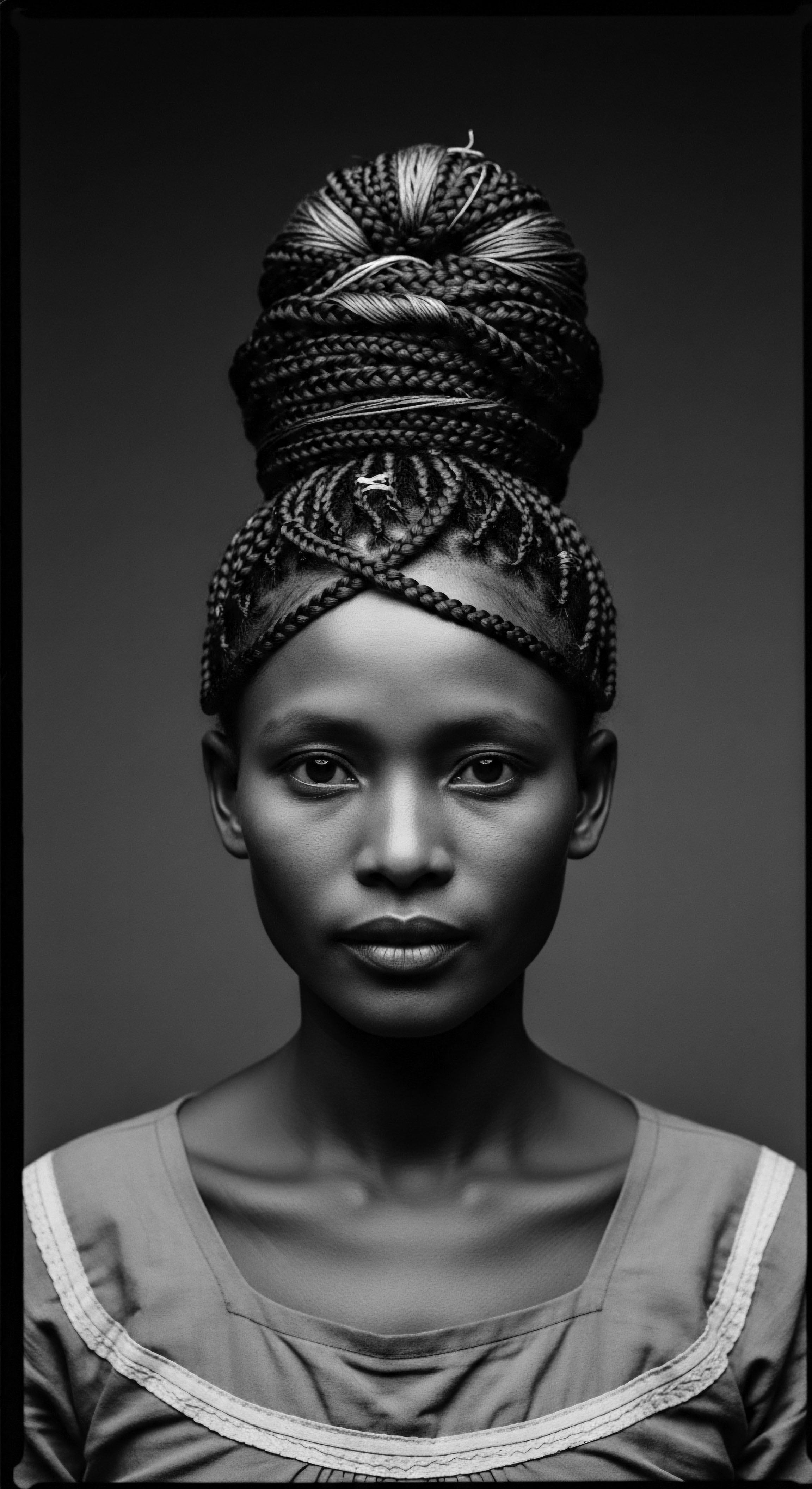
References
- Byrd, A. & Tharps, L. (2001). Hair Story ❉ Untangling the Roots of Black Hair in America. St. Martin’s Press.
- Morrow, W. (1973). 400 Years Without a Comb. Morrow’s Unlimited, Inc.
- Tarlo, E. (2016). Hair ❉ A Cultural History. Reaktion Books.
- Banks, I. (2000). Hair Matters ❉ Beauty, Power, and the Politics of Hair in African American Women. New York University Press.
- Weitz, R. (2004). Rapunzel’s Daughters ❉ What Women’s Hair Tells Us About Women’s Lives. Farrar, Straus and Giroux.
- Gordon, M. (2017). Hair in African Art and Culture. The Metropolitan Museum of Art.
- Gittens, C. (2017). The Crown Act ❉ The Fight for Hair Freedom. Journal of Civil Rights and Economic Development, 30(2), 271-298.
- Roberts, A. (2003). Afro-textured Hair ❉ A Cultural and Scientific Perspective. International Journal of Cosmetic Science, 25(1-2), 1-12.
- Loussouarn, G. (2001). African hair growth parameters. British Journal of Dermatology, 145(2), 294-297.
- Okeke, A. (2010). African Hair ❉ A Cultural and Historical Perspective. Africa World Press.
